#panchatantra moral story
Link
మామిడి పండు దొంగ పక్షి | Telugu Stories | Mango Thief Bird Story | Telugu Kathalu | Bedtime Moral Stories | KidsOne Telugu Stories, Telugu Kathalu. Latest Moral Stories in Telugu. Mamidi Pandu Donga Pakshi Katha. The Mango Thief Bird Story in Telugu. Panchatantra Tales, Telugu Fairy Tales, Moral Stories in Telugu #KidsOne #TeluguStories #TeluguKathalu #TeluguMoralStories #TeluguStories #TeluguKathalu #TeluguMoralStories #MamidiPanduDongaPakshiKatha #MangoThiefBirdStory #ThiefBirdStory #DongaPakshiStory #PakshiKatha #MagicalMangoStory #PanchatantraKathalu #BedtimeStories #FairyTalesTelugu #StoryTime
#Latest Moral Stories#Moral Stories for Children#moral stories for kids#kidsone#teluguneethikathalu#telugu kathalu#telugu moral stories#panchatantra kathalu
312 notes
·
View notes
Text
#telugu moral stories#stories in telugu#moral stories in telugu#telugu stories#moral stories#fairy tale stories in telugu#telugu kathalu#telugu fairy tales#story in telugu#telugu fairy stories#stories in telugu with moral#fairy tales in telugu#panchatantra stories#telugu fairy tales stories#stores in telugu#stories telugu#latest telugu stories#new telugu stories#telugu story#panchatantra kathalu#panchatantra stories in telugu#telugu magical stories
0 notes
Text
0 notes
Text
youtube
#Four Friends#Hindi Cartoon#Panchatantra Moral Stories for Kids#Moral Stories for Kids#Guru Maa Ki Kahaniyan#Youtube#latest news#cartoon#baby animals
1 note
·
View note
Text
21 अनोखी पंचतंत्र की कहानियां हिंदी में-Unique Panchatantra Stories With Moral Value
दोस्तों आज मैं आपके लिए Unique Panchatantra Stories With Moral Value हिन्दी में लाई हूँ जो आपके बच्चों को नैतिकता का पाठ सीखाएँगे और आपके बच्चो को अच्छी शिक्षा प्रदान करेंगे | दोस्तों बच्चों का मन बहुत कोमल होता है अगर आप अपने बच्चो को ये कहानियाँ पढाईएंगे तो आपके तो उन्हें जिन्दगी में सफलता प्राप्त करने में ये stories बहुत मदद करेंगी| Read more:
#Panchatantra stories#positive quotes#interesting story#funny jokes#moral stories for kids#positive thoughts#moral stories in hindi#inspirational story
0 notes
Text
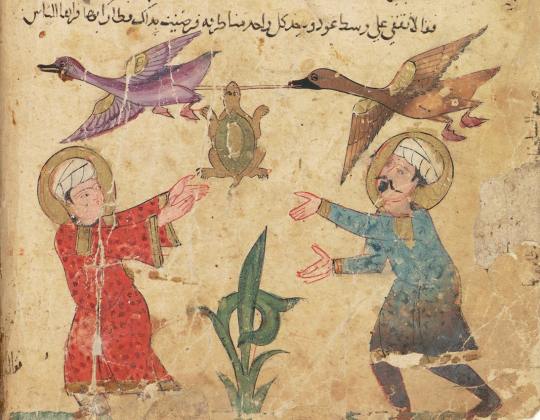
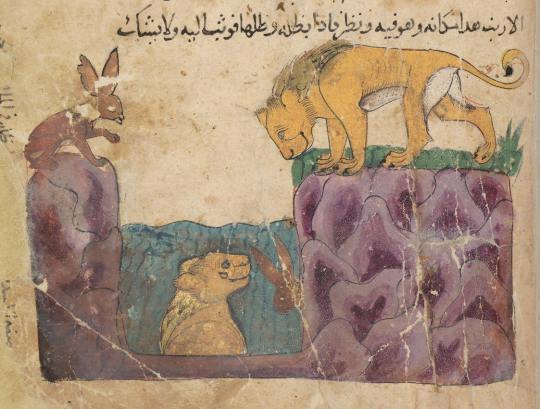
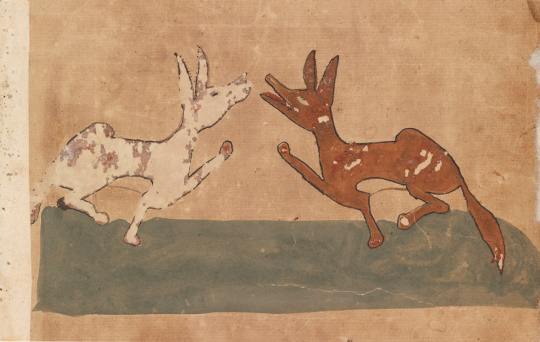

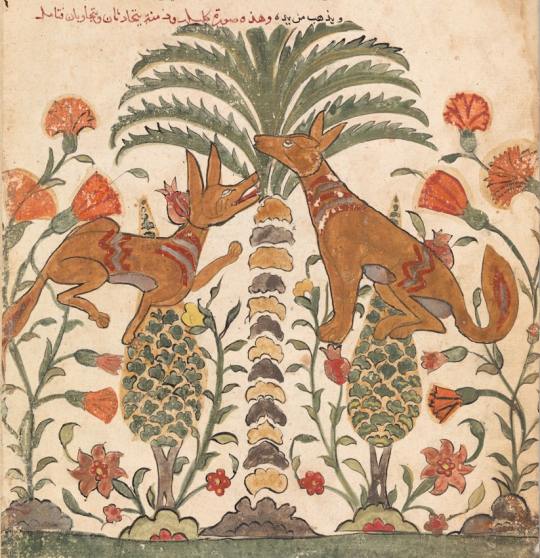

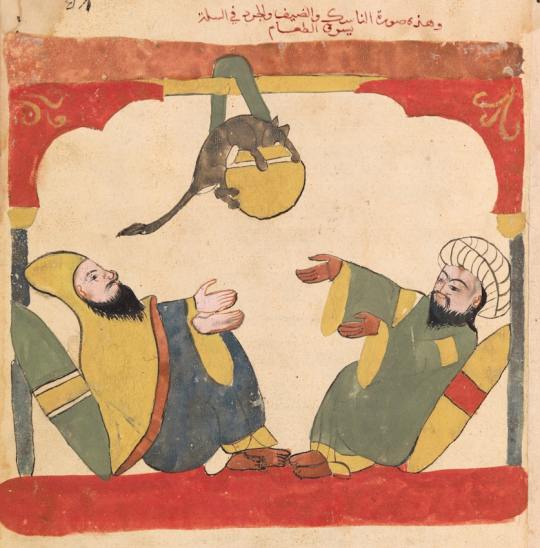
Travelling Tales
Kalīlah wa-Dimnah and the Animal Fable
By Marina Warner
Influencing numerous later animal tales told around the world, the 8th-century Arabic fables of Ibn al-Muqaffaʿ’s Kalīlah wa-Dimnah also inspired a rich visual tradition of illustration: jackals on trial, airborne turtles, and unlikely alliances between species. Marina Warner follows these stories as they wander and change across time and place, celebrating their sharp political observation and stimulating mix of humour, earnesty, and melancholy.
Kalīlah and Dimnah are two jackals, wily and ambitious, one virtuous and the other rather less so, who give their names to the eponymous cycle of animal fables in Arabic that is framed by the stories of their friendship, adventures, and mishaps.1 The collection bears a family likeness to Aesop’s Fables and to other classics of moral exempla, but the volumes vary one from one another and even when the stories coincide, they aren’t identical. They share certain generic features: animal protagonists above all (lions, wolves, monkeys, asses, mice, magpies); a narrative of braided tales passing between speakers, often imbricating one story inside the other; and a prevailing tone of tragi-comic moralising coupled with world-weary wisdom about the folly and the treachery of humans.
Most of all, the story of the two jackals Kalīlah and Dimnah, and the tales told in the course of their adventures, are travelling tales, which have been travelling for a long while, migrating from language to language, culture to culture, religion to religion. The Arabic stories’ rich history ranges from Benares to Baghdad and Basra and Rome and beyond, appearing in numerous iterations over centuries, moving across borders, carrying the sparkling hope and mordant cynicism, the canniness and the wit of a form of wisdom literature that originated in the Sanskrit Panchatantra (The Five Books, or Five Discourses) and the Mahabharata, sometime in the second century BCE. Two significant branches grew from this trunk: first, a collection often attributed to a legendary Indian sage, known as Bidpay or Pilpay, and second, the Arabic branch, beginning in the eighth century with the work of the scholar Ibn al-Muqaffa‘ (d. 139/757), who translated and compiled Kalīlah wa-Dimnah. Ibn al-Muqaffa‘ worked from a lost Pehlevi (Middle Persian) composition by a writer called Barzahwayh, which he treated freely, mixing into the Panchatantra’s original fables four more tales, and a highly circumstantial and persuasive explanation of how the manuscript was obtained; he also added a crucial dramatic chapter about Dimnah’s trial, self-defence, and ultimate punishment.
Read the whole essay https://publicdomainreview.org/essay/travelling-tales/
22 notes
·
View notes
Text
My favorite book is Panchatantra. It is written by Vishnu Sharma. The book contains a collection of many stories. The writer has tried to give the moral of life by the activity of animals. I am very fond of reading storybooks and this book provided me with different types of stories.
2 notes
·
View notes
Text
Immersive magic of bedtime stories for Indian parents with their kids

Children under 12 years of age love to hear stories from their parents, grandparents, and caregivers. Family bonds are cherished, and everyone looks forward to these nocturnal sessions. Stories promote cognitive development, communication skills and imagination for kids.
The Shri Ram Universal School in Bengaluru encourage modern parents to indulge in this activity with their kids. Read on to learn more about the importance of reading bedtime stories. As an upcoming primary school in Bengaluru, our teachers also facilitate it to keep children attentive.
There are several hidden benefits of bedtime stories for early childhood that parents can indulge in. Across India, we have a unique storytelling culture for centuries that have developed generations. Traditionally, oral folktales have fascinated the creative imagination of kids. Today, the new age tools strengthen familial ties with siblings. A child also learns how to read and write better.
Benefits of Bedtime Stories for Children
Creative tales are the perfect avenue for passing down cultural ties from one generation to another. They also serve as a bridge between the past and the present. Through mythology tales, folklore, and Panchatantra comics, children learn about their cultural heritage. This instils a sense of pride and belongingness and strengthen their values.
From the mystical realms of Panchatantra to the epic adventures reading Amar Chitra Katha, Indian folklore ignites the creative imagination and stirs the soul. Several tales transport children to enchanting worlds filled with magic, mystery, and moral lessons. They nurture creativity, and curiosity. Each story also enrich the child’s vocabulary, and comprehension. Linguistic skills in their mother tongue or regional language are strengthened.
Embedded within the fabric of Indian storytelling are timeless values of compassion, empathy, and righteousness. Learning tales of superheroes, children imbibe ethical principles that guide them on the path of righteousness.

Tradition Meets Technology
Technology offers opportunities to enrich the experience for modern families. There are some innovative ways tech-savvy parents can infuse tradition with a digital twist. They are the latest benefits of bedtime stories for children.
There are several digital apps for helping parents to narrate age-appropriate stories in different languages. Dive into the world of audio storytelling with podcasts and platforms featuring Indian storytellers and regional tales. Let the soothing voices of narrators whisk your children away on captivating audio adventures.
What more can parents do to connect their little ones with grandparents living far away?
Video calling offers wonderful virtual story sessions for cousins and grandparents to bond easily. It is a great way to immortalize the narrative as the kids brighten up. Save the sessions to enjoy during the holidays.
Interactive e-books bring alive Indian mythology and folklore with animations and sound effects.
Whether it is the comforting embrace of a grandparent’s voice or the excitement of a dramatic narration, these shared moments create indelible impressions.
Bedtime stories are timeless, adding to the warmth, wisdom, and aid kids’ growth. As we embrace tradition and technology, the magic of tales will transcend time and space. At The Shri Ram Universal School, Bengaluru, we urge parents to open the pages of these books. Help trigger this aptitude for stories in every child consciously.
0 notes
Text
Read new English Moral Stories with your friends and family. Explore new Akbar Birbal stories, Tenali Raman Stories, Panchatantra Stories, and more uploaded everyday on our website.
1 note
·
View note
Text
Dive into the enchanting world of the Panchatantra with our collection of 25 short stories, each brimming with timeless morals and lessons for kids. Written in simple English, these tales of animals and humans teach important values such as kindness, wisdom, and courage. Ideal for bedtime stories or classroom reading, our collection inspires young minds to learn and grow through storytelling. Explore these captivating tales and their morals at gupshupguru.com, where every story sparks imagination and learning. #Panchatantra #MoralStories #KidsTales #WisdomAndCourage #BedtimeStories #LearningThroughStorytelling
#Panchatantra#MoralStories#KidsTales#WisdomAndCourage#BedtimeStories#LearningThroughStorytelling#AnimalTales#EducationalContent#StorytellingForChildren#CharacterBuilding#CulturalHeritage
0 notes
Text
So, this thread is for @Spirited_Gal , who is a wonderful person & author. She reached out curious about Asian storytelling structures and techniques, then links to South Asian ones. This became a convo about native/common/historical structures/styles/techniques from South Asia.
So, let's get into some loosely (just to make y'all aware, without turning this into an academic essay because it easily can - but I do not have time for that, and am not being paid for that writing, and it could be a lot when fully fully fleshed out).
Katha | Kathya: this is an Indian style of storytelling rooted in religious stories (mythology) - the performances are ritual events in Hindiusm. Sikhism holds a different take on it but somewhat related in that there is a focus on religious discourse, taking things apart, -
questioning meaning/interpretations, & then using this to teach scriptures for a moral/religious education - directing beliefs & practices. But the purpose regardless when reduced to the simplest is the same: the moral/religious education & impartation of societal good values to people through the stories.
Usually the stories and this style are performed with a class of people who are both priests and narrators (narrators/storytellers have a massively important role in South Asian culture that they cannot be understated and undervalued, especially-
considering so much of the religious history | myths, epics/stories were orally performed and passed down. Aural (listening/hearing) pleasure are just as important as music and song and dance accompany these performances, and couplets, hymns are common as well.
Anyways, Katha is its own style focused on the religious epics like Ramayama. These stories as mentioned feature a storyteller proficient in classic music, oration, accompanied by dance/song at times, and involve story digression points - if that sounds familiar :throws copy of The First Binding at your face (lovingly).
This particular style is called: Kathakalakshepa.
Another style of Katha is: Purana-Pravachan - built on/around expounding the Puranas, a vast collection of folklore, stories, poems, legends, and more. They are heavily layered with-
deep symbolism, diverse, incorporation tales of all sorts including sciences and topics like cosmology and cosmogony (not the same). This style focuses on the spiritual interpretation of these stories while reciting them.
Folk Narratives (and I have another thread on specific ones such as Panchatantra and Jataka tales which I have talked about and have been argued by some experts to contribute | inspired to 30-50 percent of western nursery tales, ballads, "fairy" tales, as well as some (some not all, not many) middle eastern ones. Some. These are usually narrated with drumming and bow-string instruments. You might see more of these in future Tremaine novels. Perhaps even book two <.<
One of the most common type of story within the folk narrative is particularly - the heroic ballad.
Another specific style here is the Burra Katha - an oral storytelling technique that comes from the Jangam Katha (an order of religious monks associated with Shiva). It incorporates many of things I've mentioned before: prayer, drama, dance, songs, poems, humor (lewd and tame), and usually focuses on mythological stories, or interpretations to focus on modern social issues. Interesting fact, Burra refers to tambura - a stringed instrument with a hollow shell. In Telegu, the word Burra means brain. The shell of the instrument so resembles a human skull (metal! or...gothic. w.e.), it's made of baked clay, pumpkins, or soft metals like brass/copper. In this style, the narrator doesn't just narrate, they play the instrument and dances to the music. South Asia has very little just tell a story traditions.
They're all performances. You will move, you will dance, you will evoke, sing, riddles, lessons, so on. :Gestures to Ari:
Okay - that's it that I want to talk about Katha (yep one tradition/style with varied structures). Just one...see how diverse it gets.
NOW, CLASS:
Kirtan | Keertan: It's narrating, reciting, telling or describing a story or an idea. Wait isn't that the same? No. Because it's a genre of religious performance arts but you're not necessarily breaking down a religious epic/myth a certain way. Instead, you are focused on the
performance of them, many times in a group, with multiple singers, each of whom recite/focus on the name of a specific deity, or a legend, and then you perform that part, very heavy on emoting, evoking that aspect to the audience, the romance, the heroism, and then use multiple singers to discuss that. This particular style is built to engage the audience.
You bring the audience in on the chanting, on the songs, or reply to the singers. You're not lecturing and teaching a moral/spiritual education here. You're performing them and involving the crowd
That IS different. This is a collective performance. Just because you might cover similar topics as Katha, for example, doesn't mean it's the same thing.
That's like saying anything involving a four chord progression is the same (I know someone musicy will bring up a joke about how...yeah they're all the same. I KNOW WHERE YOU'RE GOING WITH THAT BUT YOU KNOW WHAT I MEAN. CHILLLLL).
Anyways, what specifically makes Kirtan different is the fact that it's not required to be educational, and it's focused on shared performances. Katha can be performed by ONE person.
Kirtan again is commonly a call-and-response style performance.
I've already talked about Puranas and Jatka Tales and Panchatantra before (you can look those up in my other thread). Also styles of storytelling because of what they entail in their collections, diversity of topics, and varied styles between them in the presentation. They're not just "works" but it's how they're collected/presented and what they cover. That matters.
Hitopadesha: Beneficial Advice. This is an Indian text, written in, as you can imagine, Sanskrit. It's compromised of fables with human and animal characters and focuses on, you guessed it, imparting advice - maxims, so on. Things involving political affairs, life advice, and is delivered in simple and elegant language. It is said in fact to actually predate the Panchatantra (which I've shared is already one of the oldest things out of there. This is said at times to be the Panchatantra before Panchatantra )
The argued point of this particularly story and its structure of being four books, really, is to both encourage the proficiency of people reading it in Sanskrit expression (writing, poetry, more), and imparting wisdom/good behavior. Note, this is not focused on religious/ mythological connections. These are some of the oldest folklore/folktale/fable style stories. You can convey lessons/wisdom/life advice without a religious epic. Though, note, religious figures DO appear and can in this style. Some examples from within:
Book one: (Translated title) How to gain a friend (some of y'all might need this with how you behave online). It begins with a statement on how the wise and sincere friends might often appear poor or destitute, however, they are the ones who more often/earnestly help one achieve true success in life. It focuses on finding friends of good quality, doing this through many particular animal stories such as: The traveler and the tiger. Or, the deer, the jackal, and the crow. The old man & his young wife. The huntsman, deer, the boar, & the serpent & jackal.
Frame Narrative: I think I've talked about this one so much it'll be mildly depressing if I have to really break this one down. But, ahem. Sandwich narrative, kind of self explanatory. Story (or stories) within a story. You have a main narrative and or narrator (hi Ari) set the stage for more emphasized and secondary narratives within (going as deeply layered as you want). The legendary South Asian epic, Mahabharta is the earliest example of Frame Narratives we have, along with Ramayama, Panchatantra, The Seven Wise Masters, and Vikram Vetala (or Vikram the Vampire oh yes, Indian Vampire - technically flesh eating demon, long story. HA. GEDDIT?). Anyways some other examples from other cultures are: 1,001 Nights, The Decameron, and Canterbury Tales. Parts of the Odyssey employ this too, the beginning, where Odysseus tells of his time in the court of King Alcinous.
Mary Shelley's, Frankenstein, has multiple framed narratives in it. Neil Gaiman's used it in parts of Sandman. But we're getting away from the South Asian history/roots.
Next:
Qissa | Kisse | Kissa (NOTE: This is not solely an Indian origin, but a fusion that comes out of Islamic/Persian heritage that developed a different localized form to Punjabi and Bangladeshi people once introduced and changed for them through migration). The word Qissa is Arabic for epic legend or folk tale. It's regularly common in Indo-Aryan languages like Punjabi, Hindi, Urdu, so on.
You can also translate it as: interesting story (which is a whole own genre - something that has led me to butting some heads with people in the biz when I explain YOU DO NOT NEED TO HAVE A STANDARD PLOT STRUCTURE FROM THE WEST. SCREAMS. :Jabs at one piece, an epic adventure fiction with a numinous goal still in the distance after 20 years, but strung together with tightly woven character driven and location arcs - it quite literally follows the history of great, grand, ADVENTURE fiction, promising more than anything, a great adventure story in pursuit of a goal. The end).
Anyways, I digress.
Punjabi Qisse/Kisse focuses on stories of love, passion, betrayal, and sometimes a common man's revolt against a larger system. Stories of friendship, loyalty, love. These are usually sung and performed. Poetry forms of this are VERY common (through all the mentioned cultures above, not just Punjabi). The Bengali style is similar (as obvy both evolved out of the Arabic tradition), just focusing more on Bengali culture and stories. They are all UTTERLY beautiful.
If you've read Tales of Tremaine (and wait for book two) you will catch these themes and notes as well.
It's almost like that series is trying to smash and share every freaking kind of storytelling technique and tradition I can from along the silk road because...there isn't one of those (golden road) in the book. Oh, wait. :blinks:
Kavya: This is a particular style of utterly beautiful poetry performed by court poets. It's a blend of prose and poetry focusing specifically on the flowery/hyperbolic uses of figures of speech, metaphors, and similes.
Sometimes you'll have pieces flowing through normalized prose and poetry in and out. That is NOT required in that specific way. It's just something that happens/can be done.
There is a very specific intentional use of that in the chapter, Brahm, in The First Binding, in where there is a creation/cosmogony story, performed in normalized prose, rhyming couplets and quatrains, with a mini section in verse.
That section is not actually Kavya, just inspired, as it is not a court epic, more drawing from the other requirement of a "short" lyrical work with those aspects I mentioned above.
There is Bhakti poetry: a specific poetic tradition from the 6th century focusing on celebrating the love and devotion for Hindu gods - showing one's mystical devotion to a god. It's devotional and religious, also focusing on condemning evils, promoting egalitarian values, transcending ideas of caste, gender, and restrictions. It hinges upon message of love.
Dastan: Is an Urdu storytelling tradition focused on epic tales of adventure, romance, chivalry (note, not only pakistani/urdu, other islamic cultures use this style). It is performed both orally and in written format.
This whole thread is JUST A PRIMER.
If you are interested, please take the time to go do a proper deep dive.
#poetry#books#book lore#folklore#folktale#folktales#Dastan#Bhakti#Punjabi#Mary Shelley#Frankenstein#Hitopadesha#katha#kathya#south asia#southeast asia#storytelling#traditions#history#storytelling techniques#writing techniques#writing craft#writers on tumblr#writer and poets#poems#poets on tumblr#narratives#narrators#writing#mythological stories
0 notes
Link
मैना की जादुई चोंच | MAINA KI JADUI CHONCH | HINDI KAHANIYA | HINDI STORIES मैना की जादुई चोंच | MAINA'S MAGIC BEAK | FAIRY TALES STORIES IN HINDI | TOON BELLS TV #CARTOONLAGADO #कार्टून #hindikahani #moralstories #story #hindikahaniya #hindistories #toonbellstv All of us might have heard this proverb, Forgiveness is the noblest revenge. In this hindi kahani Maina ki Jadui Chonch, the bird maina forgives goldie and wins everybody's hearts.
#kids stories#videos for kids#moral story#moral stories for kids#panchatantra#fairytales#hindistories#storiesinhindi
0 notes
Text
Flash Fiction: A Genre for a Quick Read.
What is Flash Fiction?
Flash fiction is a subgenre of fiction that consists of stories that are extremely brief, usually ranging from a few words to a few hundred words. Flash fiction is also called microfiction, nanofiction, short short stories, or sudden fiction. Flash fiction differs from other forms of fiction by having a complete plot with a beginning, a middle, and an end, despite its limited length. Flash fiction also differs from other forms of short fiction, such as vignettes, sketches, or anecdotes, by having a clear conflict and resolution, rather than just a description or a scene.
There is no definitive word count that defines flash fiction, as different markets and publications may have different criteria. However, most flash fiction stories are under 1,000 words, and some may even be as short as six words. The upper limit of flash fiction is usually 1,500 words, as anything longer may be considered a short story.
How did Flash Fiction emerge and evolve?
Flash fiction has roots going back to ancient times, when writers such as Aesop, Panchatantra, and Jataka used fables and parables to convey moral lessons and universal truths in a concise and witty manner. Flash fiction as we know it today emerged in the late 20th century and gained popularity in the 21st century, influenced by various factors such as the development of the internet, which enabled global and collaborative creation and dissemination of content; the rise of social media, which increased the popularity and accessibility of online communication and networking; and the emergence of new literary movements, such as postmodernism, which experimented with the form and function of fiction. Flash fiction also adapted and incorporated elements from other forms of art and entertainment, such as literature, cinema, photography, and podcasts.
What are the characteristics and themes of Flash Fiction?
Flash fiction is characterized by its use of brevity, ambiguity, and implication. Flash fiction often breaks the conventional boundaries of fiction, such as linearity, structure, and form. Flash fiction allows the reader to explore multiple paths and meanings, and to participate in the creation and interpretation of the story. Flash fiction also challenges the notions of authorship, authority, and authenticity, as the story can be modified, remixed, or co-authored by multiple agents.
Some of the common themes of flash fiction are:
The relationship between language and reality.
The impact of digital culture on identity and society.
The exploration of new forms of expression and communication
The critique of the limitations and possibilities of the medium.
The celebration of creativity and innovation.
What are some notable examples of Flash Fiction?
There are many examples of flash fiction that have been acclaimed, awarded, or exhibited in various platforms and venues. Here are some of them:
The Dinosaur (1948) by Augusto Monterroso: A seven-word story that plays with the expectations and perceptions of the reader with a surprising twist.
The Story of an Hour (1894) by Kate Chopin: A 1,000-word story that depicts the reactions of a woman who learns that her husband has died in a train accident, and then discovers that he is still alive.
“The Appointment” by Etgar Keret: A 150-word story that depicts a surreal encounter between a man and a woman who have an appointment to kill each other. It is a dark and humorous story that plays with the expectations and perceptions of the reader.
“The Scarlatti Tilt” by Richard Brautigan: A 33-word story that reveals a shocking motive for a murder with just one sentence. It is a minimalist and ironic story that challenges the conventions and expectations of the genre.
Conclusion.
Flash fiction is a genre that reflects the realities and potentials of the minimalist age. It offers new ways of experiencing and creating stories, as well as new perspectives on the role and function of literature in the contemporary world. Flash fiction is not a trivial or superficial genre, but a valid and valuable form of literature that deserves attention and appreciation.

0 notes
Text
0 notes
Video
youtube
తొందరపాటు - Telugu Story | Moral Stories In Telugu | Panchatantra| Beau...
0 notes
Text
सबसे अलग 8 Best जातक कथाएँ हिंदी में-Different Best 7 Jataka Katha in Hindi
दोस्तों आज मै आप सभी के लिए बहुत ज्ञान से भरी सबसे अलग Best 8 जातक कथा हिंदी में लेकर आई हूँ |
ये कहानियाँ ज्ञान से भरी तो है हीं साथ ही साथ आपको ये अच्छी सीख भी देंगी|
मित्रों ये हम सब जानतें है की गौतम बुद्ध का जीवन सभी के लिए प्रेरणा का स्रोत रहा है। माना जाता है कि सिर्फ एक जन्म में ही नहीं, बल्कि पिछले जन्मों में भी उनका जीवन प्रेरणादायक रहा था। उनके पिछले जन्म से जुड़े किस्से-कहानियों के संग्रह को ही जातक कथाएं कहा जाता है।
Read more:
#shorts stories#motivational quotes#moral stories in hindi#religious stories#stories#panchatantra stories#inspirational thoughts#story
0 notes